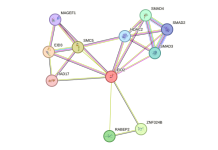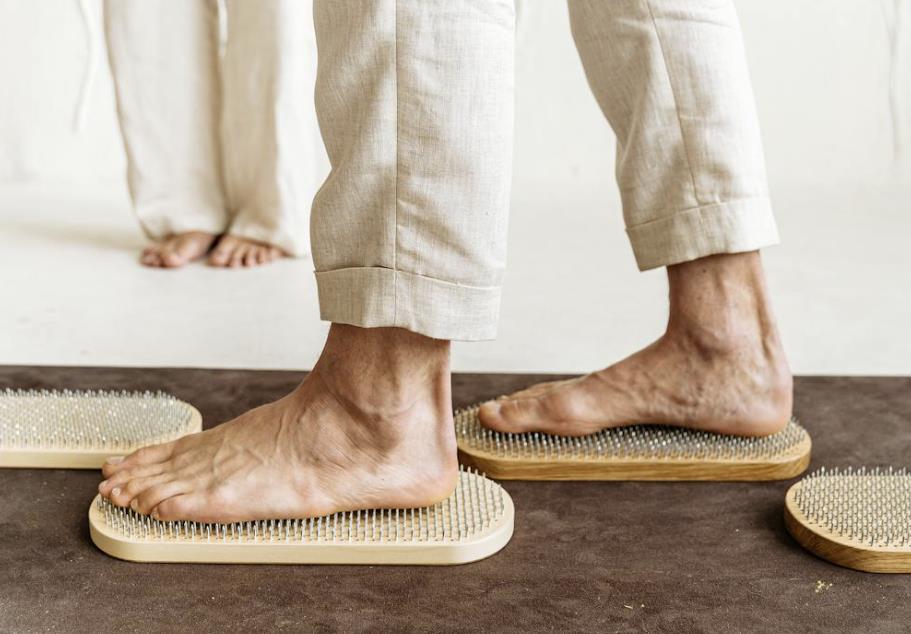How does magnet therapy work? And Cancer Patients
Utilizing nanotechnology and magnetic nanoparticles (MNPs) offers a viable substitute for concurrent cancer diagnosis and treatment. These nanotheranostic particles enable early-stage detection and specific cancer cell death.
The clinical research and investigations of Dr. Arthur Trappier were documented in the Journal of the National Medical Association. Dr. Trappier’s paper was entitled “Evaluating Perspectives on the Exposure Risks from Magnetic Fields.
The Journal revealed Dr. Trappier’s discovery that, when cancer cells are exposed to a negative (-) magnetic field, the growth of the cancer is discouraged. Moreover, interesting to note was the fact that exposure to a positive (+) magnetic field encourages cancer cell growth.
In his research, there was no question that a negative magnetic field, if properly placed, could kill cancer. Therefore, it is worth investigating magnetic therapy as an adjunct to medical qigong therapy, herbs, and nutrition. Acid hypoxia is a condition essential for cancer to develop and grow. According to Dr. William H. Philpott, M.D., a negative magnetic field produces an alkaline hyperoxia that is central ~ to magnetic resonance bio-oxidation therapy and is necessary for reversing cancer.
A negative magnetic field acts directly on the bicarbonate buffer system, allowing a normal alkaline state to be maintained. The negative magnetic field is an energy activator for the oxidoreductase enzyme system (which processes the body’s free radicals, peroxides, acids, and aldehydes). According to Western medicine, the oxidoreductase enzyme catalyzes oxidation and phosphorylation, resulting in adenosine triphosphate (ATP) and oxidative residual magnetism (a negative magnetic field).
Nevertheless, this process requires molecular oxygen in an alkaline medium (alkaline hyperoxia). These two energies govern normal human metabolism. Fermentation produces the A.T.P. energy bond required for cancer growth. Fermentation requires acid hypoxia and cannot function in the presence of alkaline hyperoxia. Consequently, the undisclosed way to treat cancer is to maintain a continuous alkaline-hyperoxia state surrounding the tissue area where the cancer is growing, so that the cancer cannot create its A.T.P. and therefore dies.
CHOOSING THE PROPER TYPE OF MAGNET
Before treating cancer patients with magnetic therapy, the proper magnet type must be selected. The most functional types of magnets used for cancer treatment therapy are described as follows:
-
Only the negative (-) magnetic field is recommended for treatment. A typical compass needle recognizes a negative magnetic field pole as a south-seeking magnetic pole. However, a traditional compass needle recognizes a positive (+) magnetic field pole as a north-seeking magnetic pole.
-
The magnets should be flat surfaces, static fields, and permanent magnets (with poles on opposite sides of the flat surfaces).
USING MAGNETIC THERAPY TO TREAT CANCER DURING THE NIGHT
The first treatment principle is to provide a baseline of systemic treatments. This involves having the patient sleep on a magnetic bed with additional magnets placed at the crown of the bed. When asleep, the patient should also be treating themselves as follows:
-
Surround both of the patient’s eyes with magnets (2 x 5 x 6-inch multi-magnetic flexible mats)
-
Surround the patient’s forehead with a large magnet (5 x 12-inch multi-magnetic flexible mat)
-
Surround the patient’s lower abdomen and pubic area with a large magnet (5 x 12-inch multi-magnetic flexible mat). This type of treatment can also be used to treat any bacterial, fungal, viral, or parasitic infection located within the patient’s pelvic region. Placing magnets on the head, eyes, and abdomen at night will stimulate the production of melatonin. This is because stimulating the pineal gland, retinas of the eyes, and intestinal tract will raise the patient’s melatonin production.
USING MAGNETIC THERAPY TO TREAT CANCER DURING THE DAY
During the day, have the patient sit on a magnetic pad. Make sure that the magnetic pad radiates far enough to stimulate the patient’s rectal and genital areas. The patient should also wear a magnet over the heart (5 x 6-inch multi-magnetic flexible mat). It is imperative to treat the patient’s heart since it will magnetize the water and oxygen flowing through the heart.
This will spread the anti-inflammatory, free radical scavenger effect throughout the patient’s body (it also helps the patient’s body maintain its normal physiological alkaline state). The alkaline state is necessary because only then can molecular oxygen be present. In an acid state, molecular oxygen is impeded.
USING MAGNETIC THERAPY TO TREAT MULTIPLE TYPES OF CANCER
The Qigong doctor can vary the treatment according to the specific needs of the patient. The most important rule to remember is that the magnetic field must be larger than the tumor being treated. The magnet must be placed over the tumor, and if the tumor is raised (e.g., when treating a melanoma), there needs to be a cushion surrounding the tissue area to avoid creating pressure on the lesion. The treatment must be continuous, with only short breaks for bathing, etc.
-
Single Carcinomas: Using magnetic pads for the treatment of single lesions can prove to be quite effective as long as the tumor is not infringing on the patient’s gastrointestinal tract or bronchi and if the tumor has not begun to impede the function of the patient’s liver.
-
Multiple Carcinomas: Using magnetic pads for the treatment of multiple lesions can also prove to be quite effective as long as the tumors have not begun to interfere with the vital functions of the patient’s gastrointestinal tract, bronchi, or liver.
-
Metastatic Carcinomas: When there are metastatic lesions, the treatment with magnetic pads becomes more complicated, as the tumors must be separately treated. Also, metastatic lesions generally interfere with the vital functions of the patient’s liver or lungs and can block the patient’s gastrointestinal tract.
Read More: Primary Care Methods for Detecting Cancer at an Early Stage







